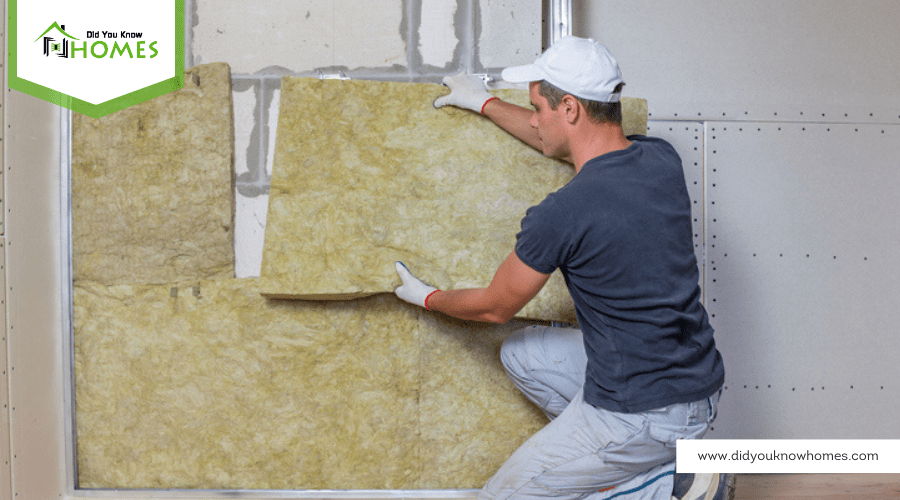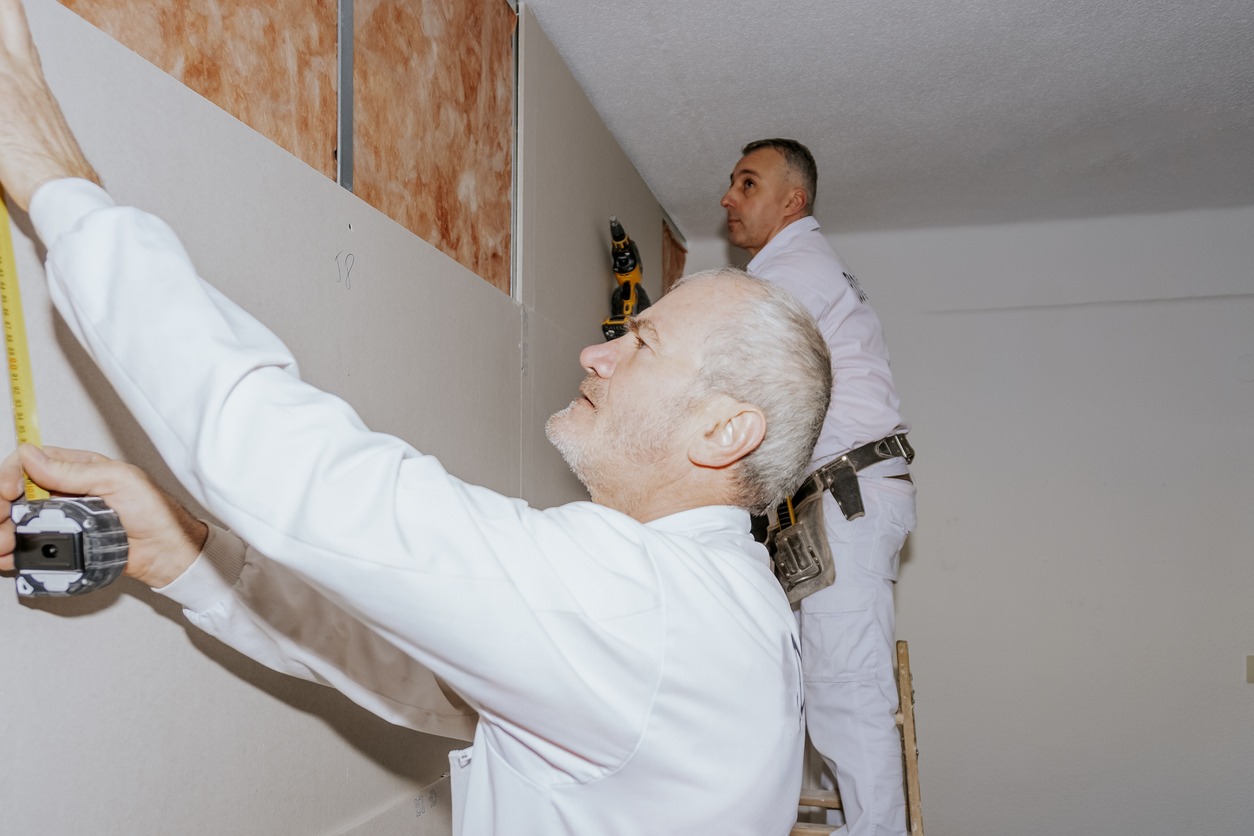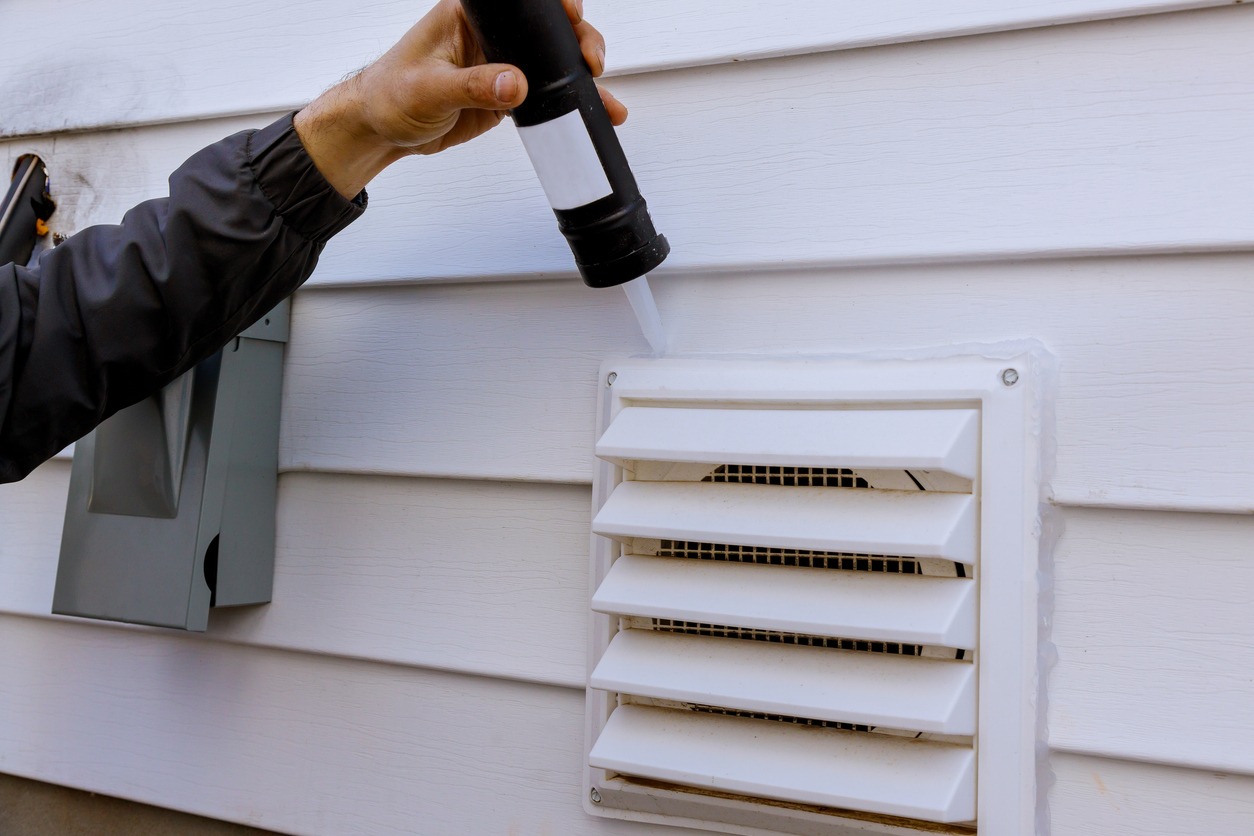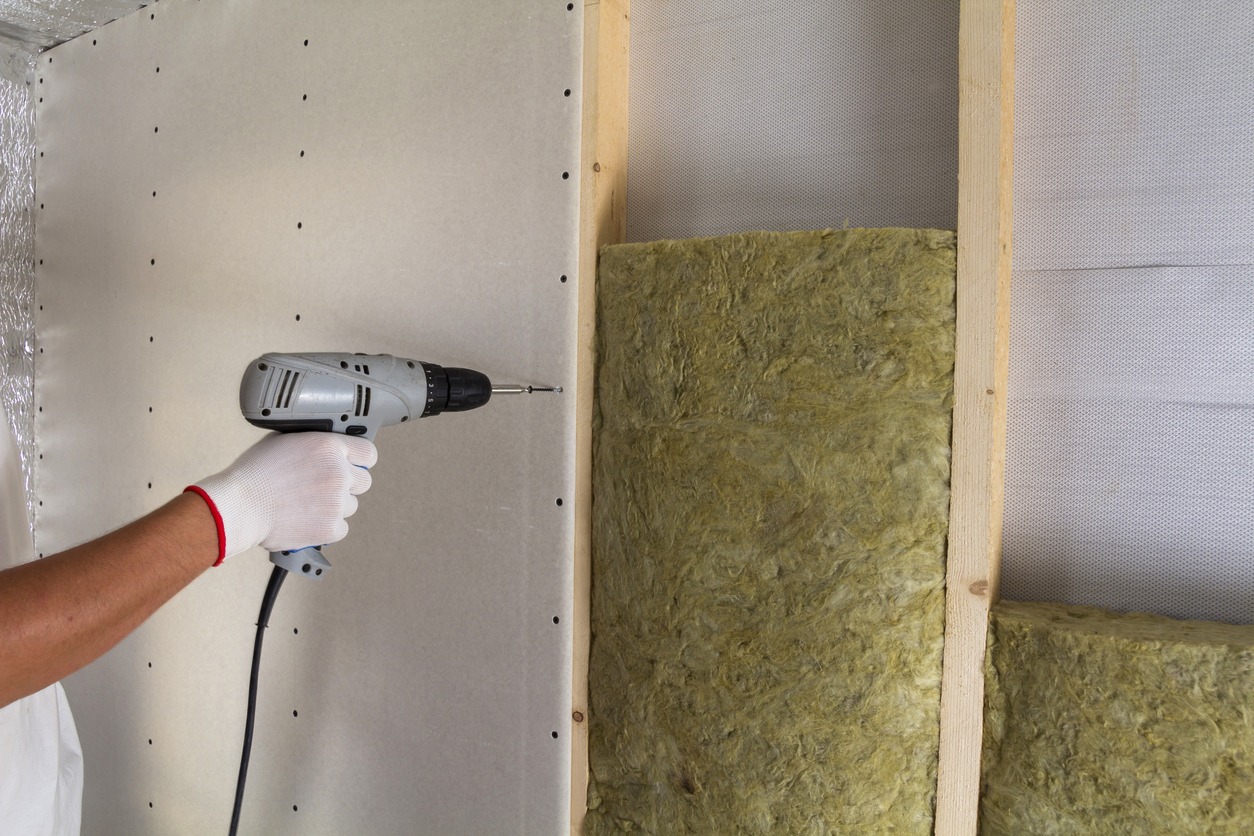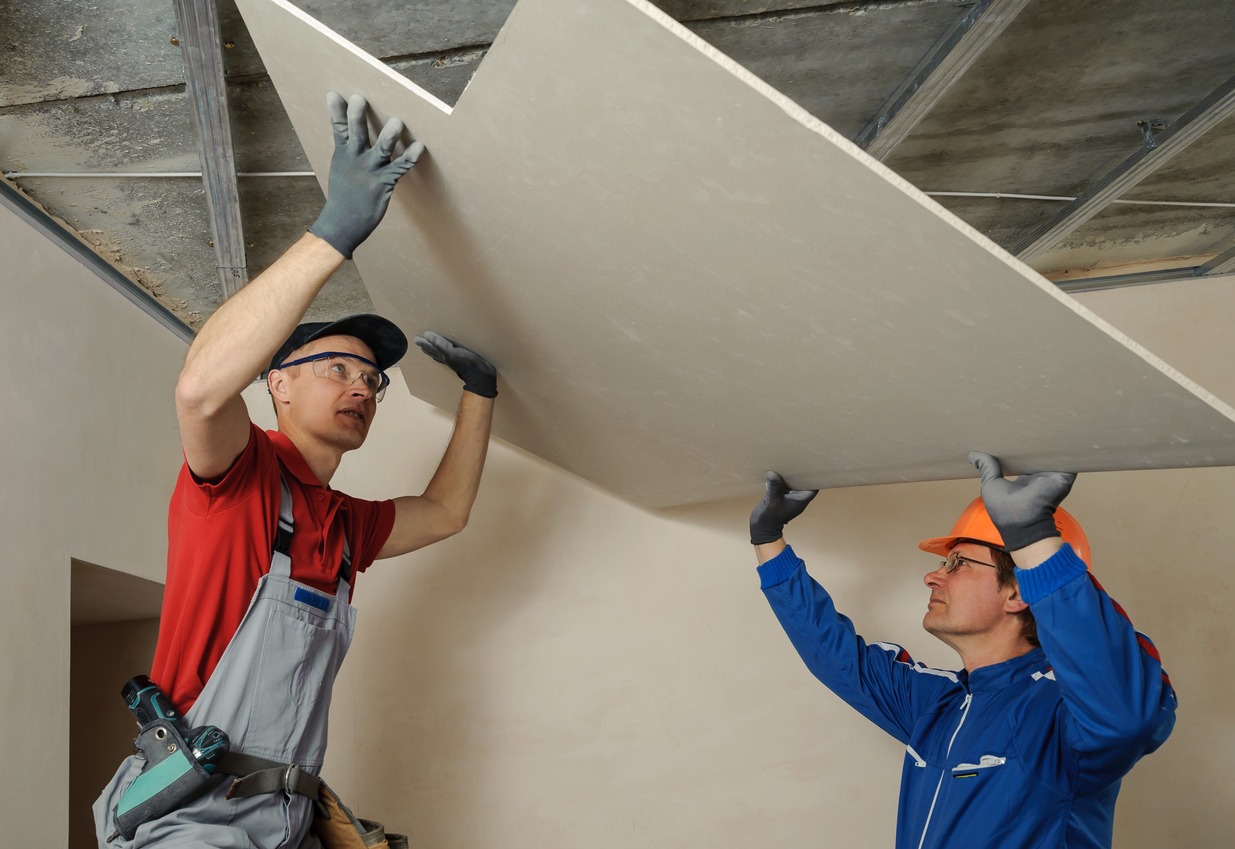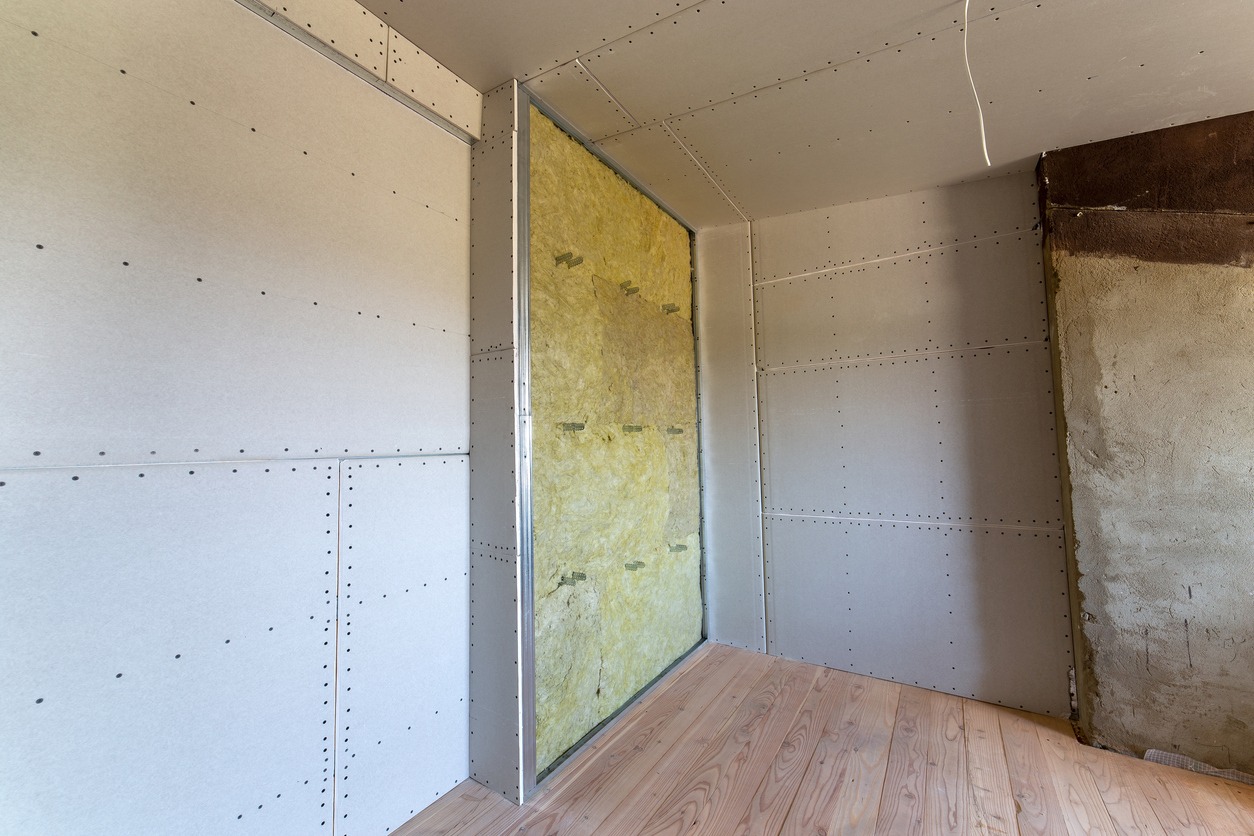You might not be aware that drywall, beyond its obvious role in creating smooth walls, profoundly impacts a home’s energy efficiency. This common building material acts as a thermal barrier, contributing to the overall insulation of your space. When you consider installing or upgrading drywall, you’re not just thinking about aesthetics but also about how it can enhance your home’s airtightness and reduce energy loss. This insight opens up a broader discussion on the myriad ways drywall contributes to energy savings. Let’s explore how optimizing your drywall choices can lead to substantial improvements in your home’s energy performance, keeping in mind the balance between cost and benefits.
Understanding Drywall’s Thermal Properties
Drywall’s natural composition, featuring a layer of gypsum sandwiched between paper sheets, acts as an effective thermal barrier, despite its low R-value. You might wonder how something with a modest R-value of about 0.5 for a half-inch thickness can play a vital role in a building’s thermal properties. The answer lies in understanding what R-value represents and the intrinsic insulation properties drywall brings to the table.
R-value measures thermal resistance, basically how well a material can resist heat flow. Though drywall alone might not seem like a heavyweight in this arena, its contribution to a building’s overall insulation is undeniable. The gypsum core, despite its low R-value, provides a continuous layer that complements additional insulating materials. This synergy reduces air infiltration and drafts, which are notorious for compromising energy efficiency.
Drywall and Home Insulation
You might not think of it first, but drywall plays an essential role in your home’s insulation. By acting as a thermal barrier, it not only keeps your home warmer in winter and cooler in summer but also makes it more energy-efficient. Pairing drywall with the right insulation materials can greatly cut down on your energy bills and enhance your living comfort.
Drywall Insulation Properties
While drywall alone offers minimal insulation with an R-value of about 0.5 for half-inch thickness, it serves as an important thermal barrier in energy-efficient homes when combined with additional insulation materials. Though not the star player in insulation, drywall contributes considerably to your home’s ability to maintain a stable temperature, reducing the need for excessive heating and cooling.
- *Drywall acts as a thermal barrier due to the gypsum layer, enhancing energy efficiency.*
- *Combining drywall with other insulation materials can greatly improve a home’s insulation effectiveness.*
- *Insulating drywall reduces air infiltration and improves thermal resistance.*
- *The insulation properties of drywall contribute not just to energy savings but also to soundproofing and fire resistance.*
Incorporating drywall strategically in your home can indeed make a difference in its overall energy performance.
Enhancing Energy Efficiency
Maximizing your home’s energy efficiency involves strategically incorporating drywall in combination with other insulation materials. Drywall acts as a thermal barrier, offering an R-value of about 0.5 for just half an inch thickness, pivotal for enhancing insulation. When installed correctly, it guarantees airtightness, reducing energy loss and boosting energy efficiency. Additionally, soundproofing qualities of drywall can indirectly promote energy efficiency by lessening the need for louder HVAC systems, which consume more power. Opting for energy-efficient drywall products further elevates insulation capabilities, cutting down on energy consumption. Importantly, City Pro’s team can inspect your drywall for any gaps or cracks that compromise airtightness, ensuring your home achieves year-round energy savings.
The Importance of Air Sealing
Understanding the role of air sealing in your home is important for enhancing energy efficiency and comfort. Air sealing involves meticulously closing off gaps, cracks, and openings in your home’s structure, particularly in the drywall, to prevent unwanted air leakage. This process is vital for several reasons:
- It greatly reduces energy loss, keeping your heated or cooled air inside, which can lead to lower utility bills.
- It enhances indoor comfort by maintaining a consistent temperature, free from drafts and cold spots.
- It prevents moisture infiltration and heat transfer, protecting your home from potential damage and discomfort.
- City Pro’s expert team specializes in identifying and effectively sealing air leaks in drywall, ensuring your living space is not only more energy-efficient but also more sustainable.
Enhancing Energy Efficiency
To boost your home’s energy efficiency, contemplate the significant role that properly installed drywall plays in insulation and reducing energy loss. By serving as a thermal barrier, drywall enhances the effectiveness of insulation materials, leading to considerable energy savings. Here’s how you can optimize your home’s energy efficiency with drywall:
| Strategy | Benefit |
|---|---|
| Upgrading Drywall | Enhances airtightness and energy savings |
| Selecting Energy-Efficient Products | Improves insulation, reducing consumption |
Properly installed drywall not only prevents the escape of heated or cooled air but also ensures that your HVAC system operates more efficiently. This means lower energy bills and a more comfortable living environment year-round. Given its role in enhancing insulation, choosing the right drywall and making sure it’s properly installed are important steps. Look for energy-efficient drywall products specifically designed to improve insulation. These specialized boards might carry a higher upfront cost, but the long-term energy savings they offer can be substantial.
Drywall’s Role in Soundproofing
Shifting our focus to how drywall contributes to soundproofing, it’s essential you understand the importance of Sound Transmission Class (STC) ratings. These ratings help you choose the right acoustic drywall, ensuring your home not only saves energy but also blocks unwanted noise effectively. Moreover, the way you install this drywall can greatly impact its soundproofing effectiveness, making it a key aspect of creating a serene and efficient living space.
Sound Transmission Class Ratings
When it comes to enhancing your home’s tranquility, the Sound Transmission Class (STC) ratings of drywall play a pivotal role by effectively blocking out unwanted noise. Understanding STC ratings can help you make informed decisions about the materials and methods used in your home to guarantee a peaceful environment. Here are key points to remember:
- STC ratings measure a material’s ability to block sound.
- Double-layered drywall with an air gap can greatly boost these ratings.
- Adding resilient channels or soundproofing compounds to drywall enhances its effectiveness.
- Proper installation and sealing of drywall are essential for minimizing sound transfer.
Acoustic Drywall Benefits
Acoustic drywall greatly reduces noise transmission, making it a key component in creating quieter, more peaceful homes. By incorporating additional layers or specialized materials, it’s specifically engineered to absorb and block sound waves. This means you’re not just getting a barrier; you’re getting a solution designed to tackle sound transmission head-on. Installing acoustic drywall can dramatically improve privacy by minimizing noise transfer between rooms. Whether you’re setting up a home theater, curating a tranquil bedroom, or designing a focused office space, acoustic drywall is your go-to for controlling sound. Its effectiveness in enhancing comfort and tranquility in living spaces can’t be overstated, transforming your home into an oasis of calm.
Installation Techniques Impact
Understanding the role of installation techniques in soundproofing reveals that the effectiveness of acoustic drywall isn’t just about the material itself. It’s how you install it that can drastically elevate its soundproofing capabilities, ensuring your home or office benefits from the quiet it deserves.
- Proper drywall installation, including double-layering with an air gap, can greatly reduce noise.
- Incorporating Green Glue between drywall layers acts as a sound-dampening barrier.
- Utilizing resilient channels can isolate vibrations, minimizing sound transfer.
- Selecting the right type of insulation enhances the soundproofing effectiveness of building materials.
These techniques not only improve acoustic comfort but also contribute to the overall energy efficiency of buildings by optimizing the use of materials like drywall.
Selecting Energy-Efficient Drywall
Selecting the right energy-efficient drywall can greatly reduce your building’s energy consumption and enhance its insulation. It’s all about choosing products that offer the best when it comes to insulation and energy savings. Some manufacturers have developed specialized drywall that’s specifically designed for this purpose. By opting for these innovative solutions, you’re not just investing in your property’s energy efficiency but also in long-term savings.
City Pro can guide you in picking the appropriate energy-efficient drywall to meet your project’s specific needs. Consider options that include added insulation or sound-dampening features to further boost your building’s energy efficiency.
To make your selection process easier, here’s a quick guide:
| Drywall Type | Features |
|---|---|
| Standard Energy-Efficient | Improved insulation |
| Sound-Dampening | Added insulation, noise reduction |
| High-Performance | Superior insulation, durability |
| Eco-Friendly | Sustainable materials, energy savings |
| Specialized | Custom solutions for unique needs |
Selecting the right drywall is a critical step towards achieving a more energy-efficient and comfortable building environment. Remember, the goal is to enhance insulation and secure energy savings with the right specialized drywall.
Installation Techniques for Optimal Performance
To guarantee your home’s energy efficiency, it’s important to master the right drywall installation techniques. Achieving airtightness and enhancing insulation performance starts with how you handle and install drywall. The process goes beyond simply fitting panels onto the walls. By focusing on detail and employing specific methods, you can reduce energy loss and make sure your home maintains a comfortable temperature year-round. Here are key techniques to ensure best performance:
- Seal all seams and joints meticulously: Proper sealing prevents air leakage, which is important for maintaining energy efficiency.
- Incorporate insulation behind the drywall: This step is important in reducing heat transfer and enhancing the overall insulation of your building.
- Employ soundproofing materials: While primarily for comfort, soundproofing can indirectly impact energy usage by creating a more stable internal environment.
- Pay attention to detail during installation: It’s the small things that often lead to significant energy losses. Ensuring every part of the installation is performed correctly can contribute greatly to your home’s energy efficiency.
Comparing Drywall R-Values
You’ve learned how to install drywall for best performance, but now let’s explore how its energy efficiency measures up. Understanding the R-value importance and comparing different types of drywall and insulation materials can guide you in making your home more energy-efficient. It’s important to know that while drywall itself has a low R-value, pairing it with the right insulation can greatly enhance your home’s thermal performance.
Understanding R-Value Significance
When evaluating a home’s insulation, it’s important to understand that drywall’s R-value of around 0.5 at half-inch thickness offers limited thermal resistance compared to materials like fiberglass batts or blown cellulose. This low R-value indicates that, on its own, drywall is not a strong insulator. However, the role of drywall in energy efficiency and insulation effectiveness in buildings is still important.
- Understanding R-values helps assess the thermal resistance of materials.
- Drywall’s R-value is important for evaluating its impact on energy efficiency.
- Other materials like fiberglass batts and blown cellulose have higher R-values.
- Proper insulation behind drywall can significantly enhance a structure’s overall R-value and energy efficiency.
Drywall Types and Efficiency
Having explored drywall’s basic insulation capabilities, let’s now examine the different types of drywall and how their R-values can impact a home’s energy efficiency. Drywall help is critical for those aiming to enhance their home’s heat flow resistance, yet it is vital to emphasize that drywall alone offers minimal insulation. For better thermal performance, comparing drywall with other materials is key.
| Material | R-Value |
|---|---|
| Drywall (1/2 inch) | 0.5 |
| Fiberglass Batts | Higher |
| Blown Cellulose | Improved |
Understanding these R-values helps in selecting materials that provide superior insulation, making your home more energy-efficient. Always consider combining drywall with materials that have a higher R-value for the best thermal efficiency.
Phase Change Materials in Drywall
Integrating Phase Change Materials (PCMs) into drywall greatly enhances a home’s energy efficiency by offering high thermal energy storage capacity. By absorbing, storing, and releasing thermal energy, PCMs in drywall can maintain your home’s temperature at a more consistent level. This not only improves your comfort but also reduces the need for heating and cooling, leading to significant energy savings.
Here are some key benefits of using phase change materials in drywall:
- Reduction of temperature fluctuations: PCMs help in minimizing the highs and lows of indoor temperatures, enhancing thermal comfort.
- Energy efficiency: By maintaining more consistent indoor temperatures, your home’s HVAC system doesn’t have to work as hard, saving energy.
- Thermal comfort: The ability of PCMs to regulate temperature contributes to a more comfortable living environment.
- Consistent indoor temperatures: PCMs in drywall contribute to a steadier indoor climate, reducing the need for artificial heating and cooling.
Incorporating PCMs into drywall is a smart move for anyone looking to improve their home’s energy efficiency and thermal comfort. As you consider ways to make your home more energy-efficient, don’t overlook the potential of phase change materials in drywall.
Retrofitting Buildings With Drywall
Retrofitting buildings with drywall not only enhances insulation but also plays a vital role in improving your home’s energy efficiency. When you decide to retrofit your space, you’re looking at a significant reduction in energy loss. This is because drywall can be a game-changer in sealing up those pesky drafts that hike up your energy bills.
By upgrading to energy-efficient drywall, you’re not just insulating your home but also making it airtight. This move drastically cuts down on the drafts that often make your living spaces less comfortable. Additionally, this upgrade isn’t just about keeping your home warm or cool; it’s also about reducing noise. The soundproofing benefits of drywall mean you won’t have to crank up your heating or cooling as much to drown out external noise, indirectly saving on energy.
What’s critical here is the quality of the drywall installation. To truly tap into these energy savings, the drywall must be installed and insulated correctly. This guarantees that your home isn’t just comfortable but also reaches its peak thermal performance. So, retrofitting your building with drywall is not just a wise choice for now but a sound investment for your home’s future energy efficiency.
Conclusion
To summarize, by understanding the vital role drywall plays in your home’s insulation and energy efficiency, you’re taking a significant step toward a more sustainable future. Its thermal properties, combined with proper air sealing and innovative materials like phase change drywall, can drastically reduce your energy consumption. Remember, installing drywall correctly and considering its R-value are key. So, whether you’re upgrading or retrofitting, choosing energy-efficient drywall can lead to substantial long-term savings and a more comfortable living environment.

